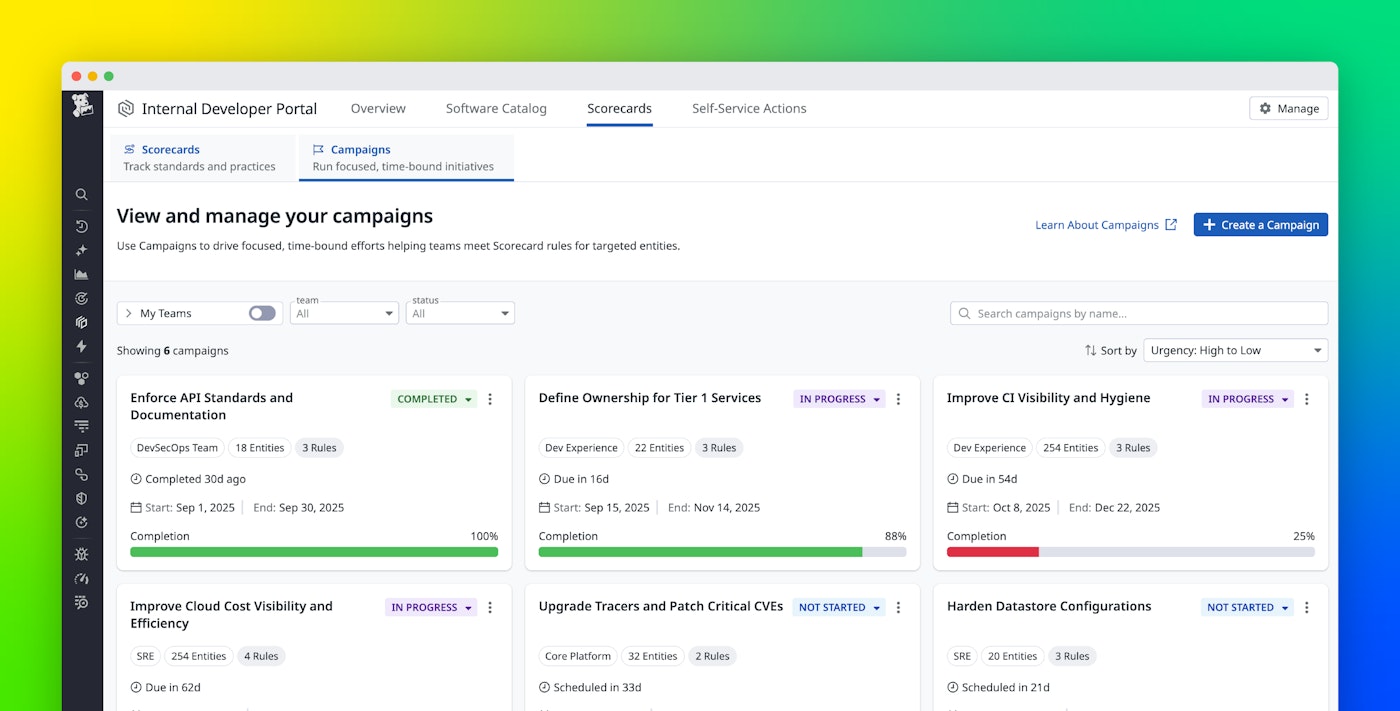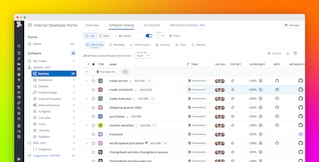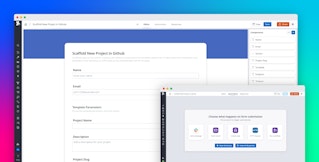
Amrita Lakhanpal

Nicole Parisi

JC Mackin
As organizations grow, engineering leaders often need to drive cross-team initiatives such as reducing cloud spend, upgrading runtimes, or strengthening security controls. Tracking this work can quickly become fragmented across spreadsheets, dashboards, and status meetings. Progress is hard to measure, accountability is unclear, and the impact of each effort can be difficult to demonstrate.
Datadog’s Internal Developer Portal (IDP) already provides reliability, performance, and security tracking through the IDP Scorecards feature so that teams can identify gaps and measure software health over time. Now, IDP Campaigns extend IDP Scorecards to coordinate time-bound initiatives such as implementing new compliance rules or upgrading runtimes around measurable results.
In this post, we’ll cover how IDP Campaigns can help you:
- Define organization-wide initiatives
- Optimize cloud costs at scale
- Accelerate migration projects
- Strengthen security controls after an audit
Define organization-wide initiatives
Each campaign you create in the IDP starts with a clear goal, a defined audience, and a timeframe for completion. Before launching, you can select existing scorecard rules to evaluate progress. These rules provide measurable criteria for success, whether that’s ensuring every service meets a security control or driving adoption of a specific runtime.
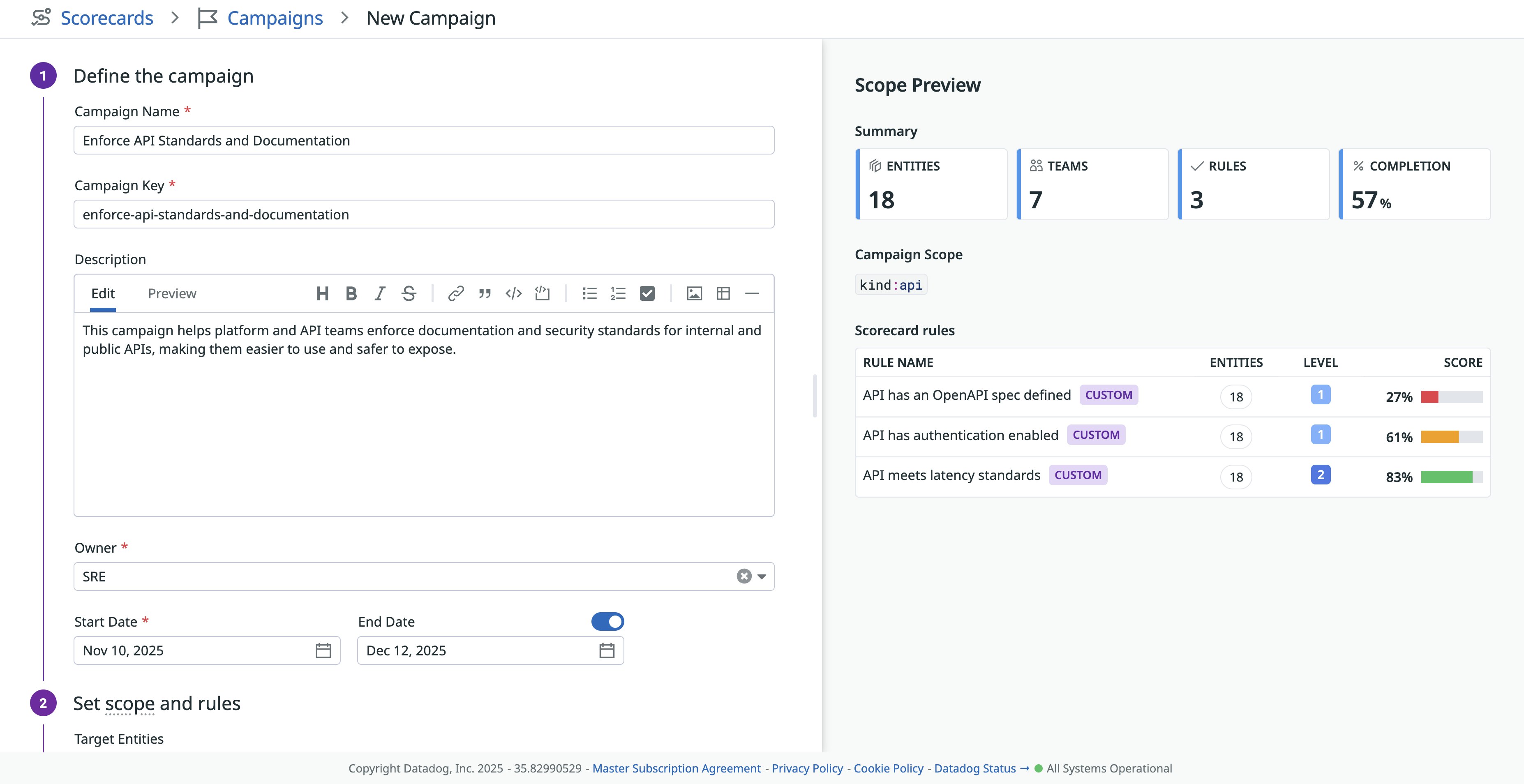
When creating a campaign, platform engineers can outline the initiative, set its duration, and choose which entities or teams it covers. Adding guidance—for example, through internal documentation or best practices—helps engineering teams understand expectations. Optional alerts, including Slack updates that summarize completion rates and highlight top-performing teams, keep stakeholders aligned as milestones approach or when progress falls behind.

Optimize cloud costs at scale
FinOps and platform teams often aim to standardize cost management practices across hundreds of services, but adoption tends to be uneven and difficult to verify. IDP Campaigns make that process both measurable and visible.
A cloud cost optimization campaign can define rules that verify cost attribution tags, check savings plan coverage, and monitor infrastructure for budget-related metrics. Each service’s compliance requirements are tracked automatically, giving FinOps and engineering leaders a clear picture of adoption across their environments without relying on manual check-ins.
The Campaign Overview page shows the progress of a cost optimization initiative across all services. Teams can see overall completion, track adoption trends over time, and identify which teams have reached 100% compliance using the built-in leaderboard. This visibility helps platform and FinOps leaders focus on areas that need support and celebrate groups driving best practices across the organization.
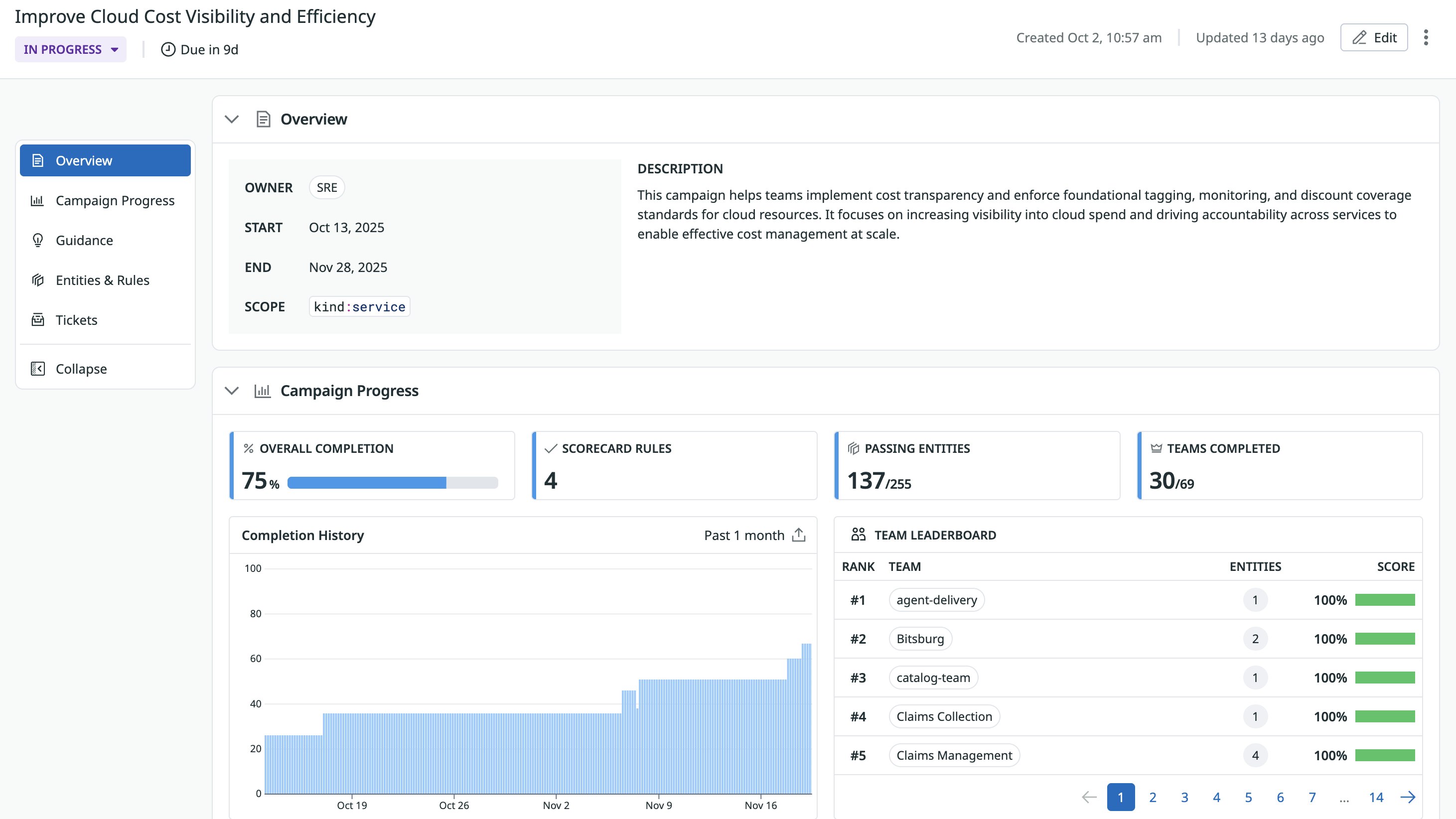
Accelerate migration projects
Major version upgrades, such as moving from Python 3.8 to 3.12, are often time-sensitive and complex. With IDP Campaigns, platform teams can track these migrations through scorecard rules that validate runtime versions or detect deprecated dependencies.
A migration campaign can automatically flag services that haven’t yet upgraded, highlight blockers, and show which teams have completed the transition. Each service’s status is visible at a glance, giving engineering leaders a clear picture of progress across each environment and helping them focus on teams that need extra support.
Each service’s campaign view also gives developers direct insight into what’s expected for their component. From within the entity’s page, they can see which campaigns apply, which rules are passing or failing, and what actions are needed to reach compliance. This visibility helps teams identify blockers early, fix issues quickly, and validate their own progress without waiting for central updates.
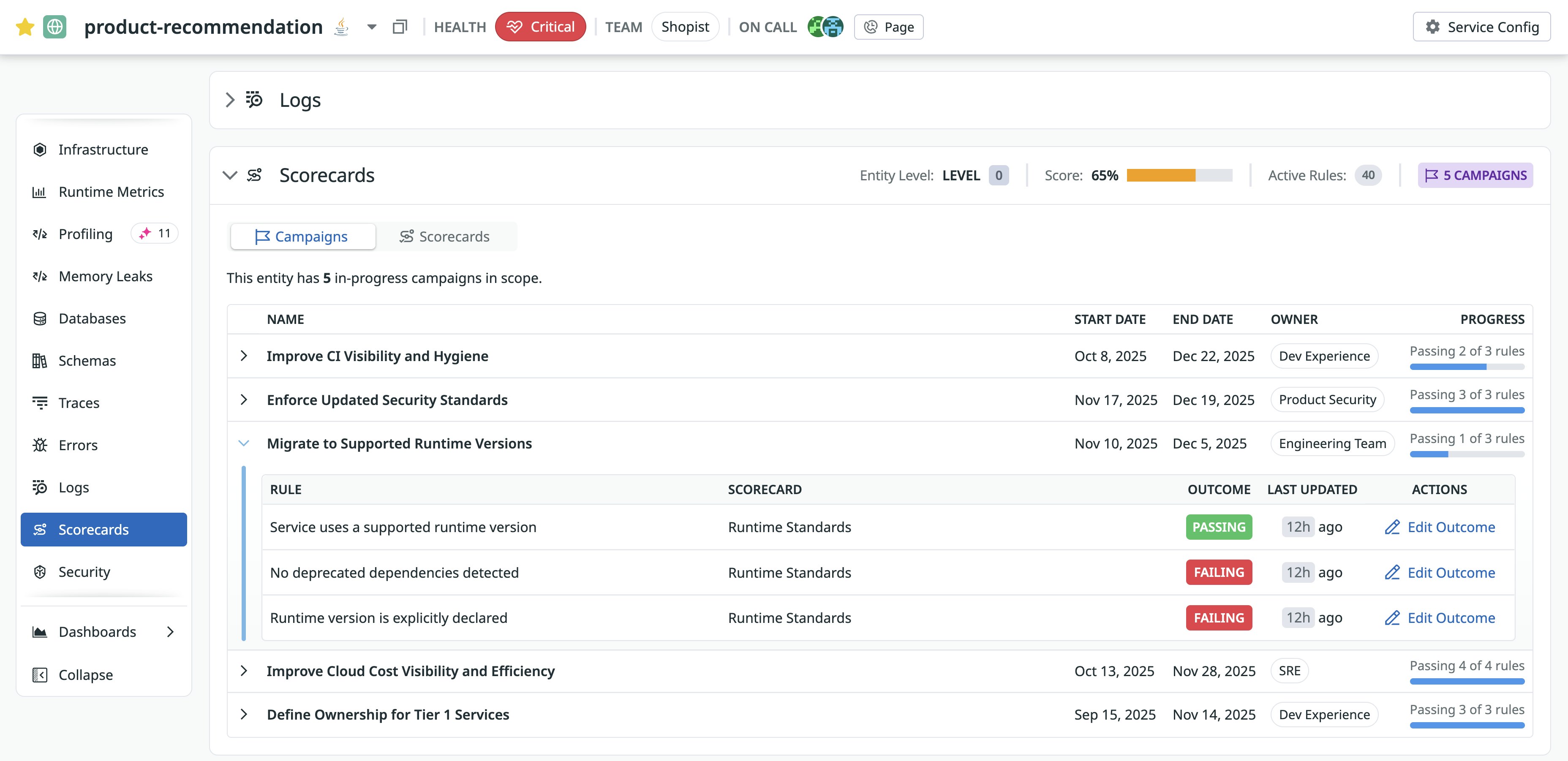
Strengthen security controls after an audit
After a security audit, organizations often need to roll out updated standards quickly. Campaigns make this process auditable and transparent by letting you define rules for specific controls and monitor adherence across every service.
For example, a security campaign can enforce standards such as requiring TLS 1.3 for all connections, storing secrets in Vault, and ensuring that personally identifying information (PII) is redacted in logs. Compliance with these standards is measured automatically, allowing teams to identify and remediate noncompliant services as soon as issues arise.
In the view below, platform or security engineers can review all campaign rules and affected services to prioritize fixes and confirm updates. This approach eliminates the need for external spreadsheets or manual status reports while providing a verifiable record of progress directly within Datadog.
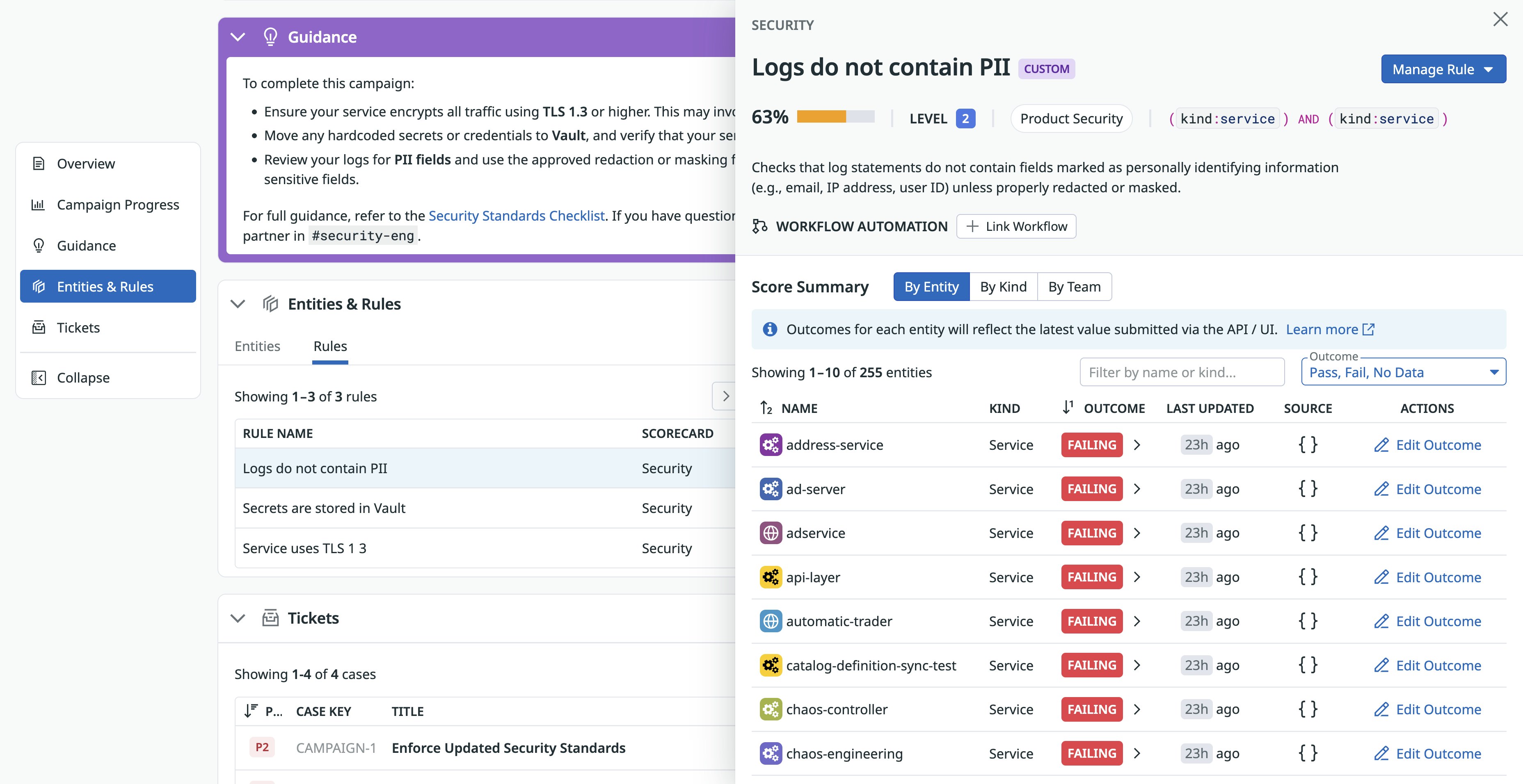
Track and share engineering progress company-wide with IDP Campaigns
Campaigns in Datadog’s Internal Developer Portal give teams a clear framework for driving organization-wide initiatives, making it easier to define goals, monitor progress, and keep work on schedule. Because campaigns build directly on the scoring rules that are already defined in IDP Scorecards, teams can measure changes by using criteria they’re already tracking.
IDP Campaigns is available now in Preview. You can sign up for early access here. To learn more about creating and managing campaigns through IDP Campaigns, visit the documentation. And if you’re new to Datadog, sign up for a 14-day free trial today.
